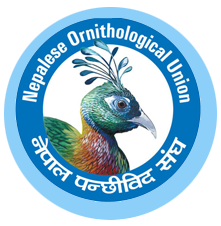< Go Back
Galliformes research and conservation Project-Dhorpatan Hunting Reserve
Pheasants remain as one of the best-known birds to Nepali people and most hunted bird species in Nepal. However, very little scientific information is available on their ecology and population in Nepal. Nepal is home of eight species of pheasant, among them six species has been recorded from Dhorpatan Hunting Reserve (DHR) including the Cheer Pheasant. The International Union for Conservation of Nature has classified it as Vulnerable since 1994 due to its small and declining global population that is impacted by anthropogenic pressures such as habitat fragmentation, grazing disturbance from livestock, hunting and land use change (BirdLife International 2017) while Satyr Tragopan Tragopan satyra is globally Near Threatened species. Additionally, the Cheer Pheasant is classified as Endangered in Nepal’s national red list and is one of nine nationally protected birds with population estimation less than 1000 in Nepal (Inskipp et al. 2016). In Nepal, the Cheer Pheasant is distributed both within and outside of protected areas (Inskipp et al. 2016, Basnet & Poudyal 2017). Of these protected areas, Dhorpatan Hunting Reserve (DHR) has by far the largest known population and is considered a stronghold of the species in Nepal and across its entire range (Garson & Baral 2007).
In the Dhorpatan valley, Cheer Pheasant monitoring was first conducted by Lelliot (1981) while after two decades, Poorneshwor Subedi studied its population status in 2003 and found the population to be stable over the period from 1981 to 2003 (Subedi 2003). The latest survey of Cheer in the valley was done in 2013 by Hari Basnet (Basnet et al. 2020) where significant decline in Cheer Pheasant has been noticed. However, follow-up work was lacking for a decade in spite of the increasing anthropogenic activities that have led to further habitat loss and fragmentation in the park. Moreover, poaching, trapping/snaring and the collection of eggs are common in the park, threatening not only the Vulnerable Cheer Pheasant but also the population of other five species. Therefore, after a decade, we will be working on following activities:
- Conduct a national workshop to explore present issues on pheasants.
- Establish long-term pheasant monitoring plots and enhance locals’ knowledge through capacity building training to monitor the plots.
- Estimate the population status of pheasant species in the Dhorpatan Valley, with a focus on the Cheer Pheasant.
